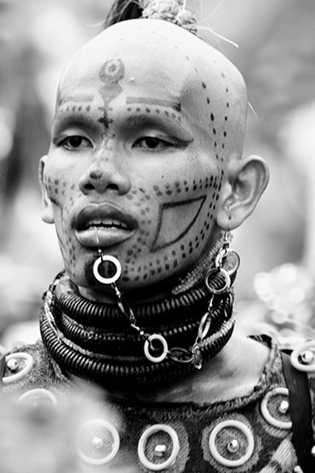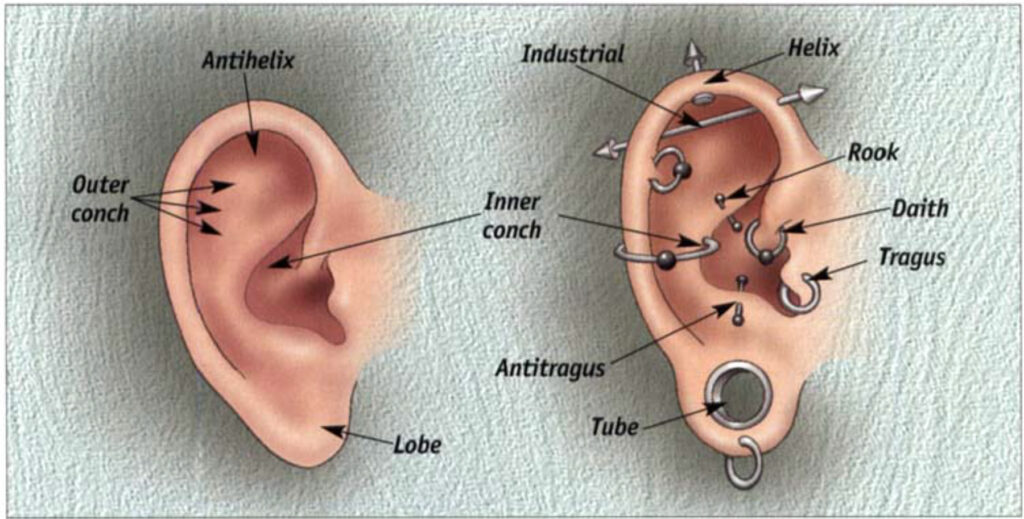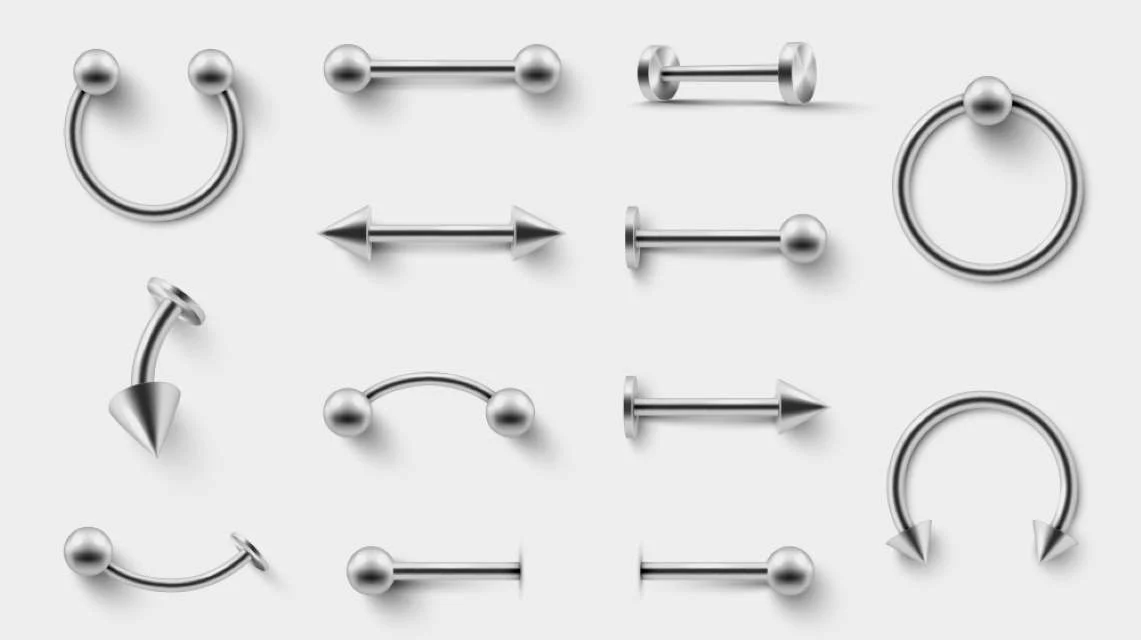Introduction:
Apadravya is a fascinating and intriguing body modification that has been practiced for centuries. In this ultimate guide, we will explore the history, cultural significance, meaning, piercing process, aftercare, risks, and answer some frequently asked questions about Apadravya.
Understanding Apadravya:
Apadravya is a type of male genital piercing that passes vertically through the glans of the penis. It is one of the most popular and visually striking forms of body modification. Let’s delve into the history and cultural significance of Apadravya.
The History and Cultural Significance of Apadravya:

Apadravya has a rich history that dates back to ancient times. The practice originated in South Asia, particularly India, where it holds deep religious and cultural significance. In some Indian traditions, Apadravya is believed to enhance sexual pleasure and signify the divine union between Shiva and Shakti.
Legend has it that the god Shiva himself wore an Apadravya piercing, which further elevated its status and importance in Hindu mythology. It was believed that by adorning this piercing, one could tap into the divine energy and experience a heightened sense of pleasure and spiritual connection.
As the practice of Apadravya spread across different regions, it evolved and adapted to various cultural contexts. In some cultures, Apadravya became a rite of passage, symbolizing the transition from boyhood to manhood. It was seen as a mark of bravery and endurance, as the piercing process itself required immense courage and pain tolerance.
Over time, Apadravya has become more than just a physical adornment. It has become a symbol of personal identity and self-expression. For many individuals, getting an Apadravya piercing is a way to reclaim their bodies and challenge societal norms and expectations.
The Meaning Behind Apadravya:
Apadravya symbolizes various meanings for different individuals. For some, it represents strength, courage, and the courage to embrace one’s true self. Others may view it as a celebration of sexual identity or a way to explore their desires and fantasies.
Beyond its personal significance, Apadravya also carries a sense of community and belonging. In certain subcultures, individuals with Apadravya piercings form tight-knit communities, offering support and camaraderie to one another. They share experiences, advice, and even jewellery recommendations, creating a sense of unity and shared identity.
It is important to note that Apadravya, like any form of body modification, should be approached with caution and care. It is crucial to seek professional piercing services and follow proper aftercare instructions to ensure a safe and healthy healing process.
As Apadravya continues to captivate the imagination of individuals worldwide, its history and cultural significance remain an integral part of its allure. Whether it is seen as a spiritual connection, an act of rebellion, or a symbol of personal empowerment, Apadravya continues to leave a lasting impression on those who choose to embrace it.
The Apadravya Piercing Process:

Before considering Apadravya, it is essential to understand the pre-piercing considerations and familiarize yourself with the piercing procedure to ensure a safe and satisfying experience.
The Apadravya piercing is a type of male genital piercing that passes vertically through the glans of the penis. It is a bold and visually striking piercing that can provide both aesthetic and sexual pleasure benefits. However, it is important to approach this piercing with caution and educate yourself about the process before making a decision.
Pre-Piercing Considerations:
Prior to getting an Apadravya piercing, it is crucial to find a reputable, experienced piercer. Research and consult with professionals who adhere to strict sterilization and hygiene practices. This will help minimize the risk of infection and ensure that the piercing is done correctly.
When choosing a piercer, consider their experience with genital piercings specifically. Genital piercings require a higher level of skill and expertise compared to other types of piercings due to the sensitive nature of the area. Look for piercers who have a portfolio of successful genital piercings and positive client testimonials.
It is also advisable to discuss your medical history and any concerns or expectations with your piercer. Certain medical conditions or medications may affect the healing process, so it is important to disclose this information to your piercer. They can provide guidance on whether an Apadravya piercing is suitable for you and offer any necessary precautions.
The Piercing Procedure: What to Expect:
During the piercing procedure, the piercer will clean and mark the desired piercing location. They will use a sterile needle specifically designed for genital piercings to minimize tissue damage and promote faster healing.
The piercer will then carefully insert the needle through the glans of the penis, creating a vertical channel. This process may cause some discomfort, as the glans is a highly sensitive area. However, a skilled piercer will work efficiently to minimize any pain and ensure a smooth piercing experience.
It is important to note that everyone’s pain tolerance is different. Some individuals may find the Apadravya piercing to be relatively painless, while others may experience more discomfort.
After the piercing, you may experience mild swelling, bleeding, or tenderness. This is normal and part of the healing process. The initial healing period for an Apadravya piercing typically ranges from 4 to 6 weeks, during which you should follow proper aftercare instructions provided by your piercer.
Proper aftercare is crucial for a successful healing journey. This includes cleaning the piercing with saline solution or a gentle, fragrance-free soap, avoiding sexual activities that may irritate the piercing, and wearing loose-fitting underwear to allow for proper airflow and reduce friction.
It is important to note that the healing time can vary from person to person. Factors such as individual healing abilities, lifestyle choices, and adherence to aftercare instructions can influence the healing process.
Once the piercing is fully healed, you can enjoy the aesthetic appeal of the Apadravya piercing and potentially experience enhanced sexual pleasure. However, it is crucial to prioritize your safety and well-being throughout the entire process, from pre-piercing considerations to aftercare.
Remember, getting an Apadravya piercing is a personal choice, and it is important to make an informed decision based on your own preferences and comfort level.
Aftercare and Healing:
Proper aftercare is vital for the healing and maintenance of your Apadravya piercing. Let’s explore immediate aftercare instructions and long-term healing practices.
Immediate Aftercare Instructions:
Immediately after the piercing, it is essential to keep the area clean and avoid any activities that may irritate or disrupt the healing process. Clean the piercing gently with saline solution or a mild saltwater rinse twice a day. Avoid sexual activities and use protection during healing.
Refrain from touching the piercing with unclean hands and avoid tight clothing that may cause friction. Additionally, avoid swimming in pools, hot tubs, or other bodies of water that may contain bacteria that could cause infection.
Long-Term Healing and Maintenance
Healing times for Apadravya piercings can vary, lasting anywhere from a few weeks to several months. It is essential to be patient and gentle with your piercing as it continues to heal. Regularly clean the piercing, avoid changing jewellery too soon, and consult with your piercer if you experience any complications or concerns.
Potential Risks and Complications:
while Apadravya can be a visually stunning and empowering piercing, it is crucial to be aware of the potential risks and complications that may arise.
Common Risks Associated with Apadravya
Some common risks include infection, migration, rejection, excessive bleeding, and allergic reactions to the jewellery material. By ensuring proper aftercare and consulting with a professional piercer, you can minimize these risks and increase the chances of a successful healing process.
How to Handle Complications:
If you experience any complications, such as persistent pain, redness, swelling, discharge, or abnormal healing, it is vital to seek professional advice. Your piercer or a healthcare professional can provide guidance and recommend appropriate treatments or changes in aftercare routine.
Also read this” Bisht: Unraveling the Elegance and Traditional Garment “
Conclusion:
Apadravya is a piercing that holds deep cultural significance and offers a visually striking form of self-expression. By understanding the history, meaning, piercing process, aftercare, and potential risks, you can embark on a safe and enjoyable Apadravya piercing journey. Remember to consult with a professional, follow proper aftercare routines, and listen to your body throughout the healing process. Embrace your unique journey and enjoy the empowerment that Apadravya can bring.
Frequently Asked Questions:
Is Apadravya Piercing Painful?
Pain tolerance varies from person to person. While Apadravya piercing may cause some discomfort during the procedure, the pain is often manageable and short-lived. Choosing a skilled and experienced piercer can help minimize any pain or discomfort.
How Long Does an Apadravya Piercing Take to Heal?
The healing time for an Apadravya piercing can range from a few weeks to several months, depending on individual factors such as aftercare, lifestyle, and overall health. Proper care, patience, and following the aftercare instructions provided by your piercer are crucial for a successful healing process.
How long does an Apadravya bleed for?
This area also being very vascular generally results in bleeding, both during the procedure and afterward. Bleeding can occur for up to a week post-procedure but will gradually slow down over time. Utilizing warm water in your shower is a quick and easy way to soak off and easily remove any dried blood.
